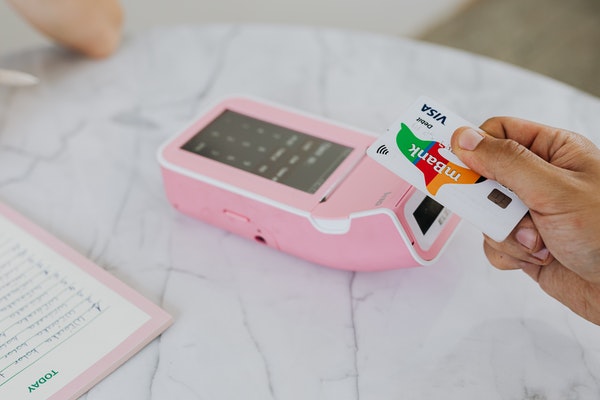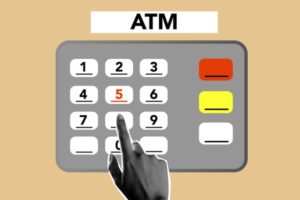I always thought debit card ATM fees were a very silly expense. Using off network ATM’s can be very expensive, and almost always just a result of poor planning. Convenience can be costly, and can even cause credit card debt. Using a debit card for a purchase, that was a different story, until now….
Using a debit card for purchases was an easy way to track some of my spending via an online statement. Also, carrying very little pocket cash helps to cut down on impulse purchases with loose change and small bills. But then….
In my last post I alluded to changes in the way debit cards were being handled at the banks. Here are more details that you really need to know.
The Durbin Amendment to the recently enacted Dodd-Frank Wall Street Reform and Consumer Protection Act of 2010 lowers the rate that banks can charge merchants for use of a debit card. Previously, they were allowed 1 – 2% of the transaction. Nationally, the average was 44 cents per swipe. Use a debit card for a $100 purchase, the bank would charge the retailer a buck or two depending on their processing agreement. Simple.
Under the new law, which is supposed to take effect on July 21, the amount that the banks can charge the merchant will be a flat rate of 7 – 12 cents. Regardless of the amount of the purchase transaction. At risk is nearly $14 BILLION dollars in debit card processing revenue for the banks. While the banks are in court fighting this, you need to be taking a closer look at your debit card fees.
Banks are not in business to lose money. They will absolutely find a way to replace all that revenue. There is argument and lobbying by the industry to delay enactment of the act for up to two years (effectively handing the banks nearly $30 BILLION in fees.)
Are you used to getting cash back rewards by using your debit card? That will most likely go away.
Several large banks have already declared that they will discontinue their debit rewards programs. If they cannot get significant interest from the merchant for the transaction, why would they give you an incentive to use your debit card?
Here are a few ways to lessen the impending burden on your budget. Some of the ideas will apply even without this change.
1. Using off network ATMs is silly. Spending $1.00 to $5.00 per withdrawal at an ATM to get your own money is ludicrous.
2. Locate and use your own bank’s ATM. If they don’t have any ATMs convenient to your lifestyle, consider opening an account with a bank that does – and that does not charge fees.
3. HERE’S A BIGGIE! – Smaller banks are unaffected by this new amendment. Banks with less than $10 billion in holdings are not affected. Check out a local bank, cooperative, or credit union. You can count on smaller banks using this act to try and open more accounts. Not a bad thing!
4. Plan ahead! Get enough money from your bank teller, or ONE trip to the ATM for the week. This takes a little more discipline for some of us- cold hard cash in the pocket can be mighty tempting.
5. If you must use an ATM and pay a fee, consider taking more out – as long as you can keep it under control. Taking out $50 and paying $2.00 costs you 4%. Taking out $100 instead of $50 costs you the same $2, but its only 2%.
6. Know what you are spending for the convenience provided by your debit card. Take a look at your monthly statement and add up all those fees. See how much you could save with a little planning. I was shocked when I did this several months ago. Once ATM use becomes a habit, you can lose track of what it costs.
7. Fees on purchases with debit cards will be harder to see in action. When using an ATM, you get a screen where you agree to the fee. If your bank decides to charge you fees for using your debit card for purchases, (would this surprise anyone?) no such screen will pop up when you make a purchase. Think about it. When you make a credit card purchase you don’t get a receipt that says “Your purchases comes to a total of $100, Tax is $8 and your credit card interest for this purchase will be $12.00 annually unless your bill is paid in full at the end of the cycle.” Or do you?
8. Avoiding the ATM altogether by using the “cash back” option at the grocery store is another way to save. Just be sure to know what their policy is. I was mortified (not really) when I learned that my dollar store gave cash back, but charged…. (drum roll please…) a dollar! Even if debit fees are foisted onto the consumer, it may be wiser to get cash back intermittently rather than paying at the ATM. But don’t make this a habit, getting cash back for that second latte, or impulse items.
9. Again, as in my last post, you absolutely must – READ EVERY PIECE OF MAIL THAT COMES FROM YOUR BANK! The fine print may contain information about new debit card fees. They are required to tell you about the changes, but they can’t make you read your mail.
Caveat Emptor. (Let the buyer beware.)
If you’re struggling to pay off debt, ACCC can help. Schedule a free credit counseling session with us today.






